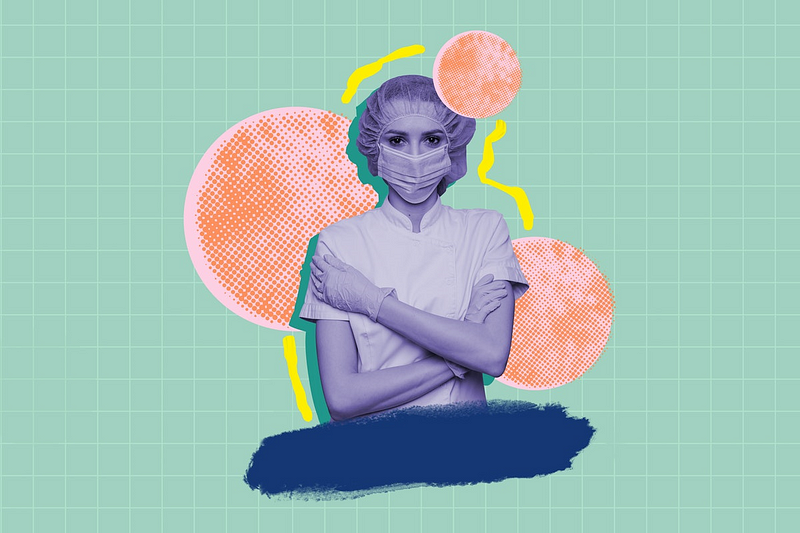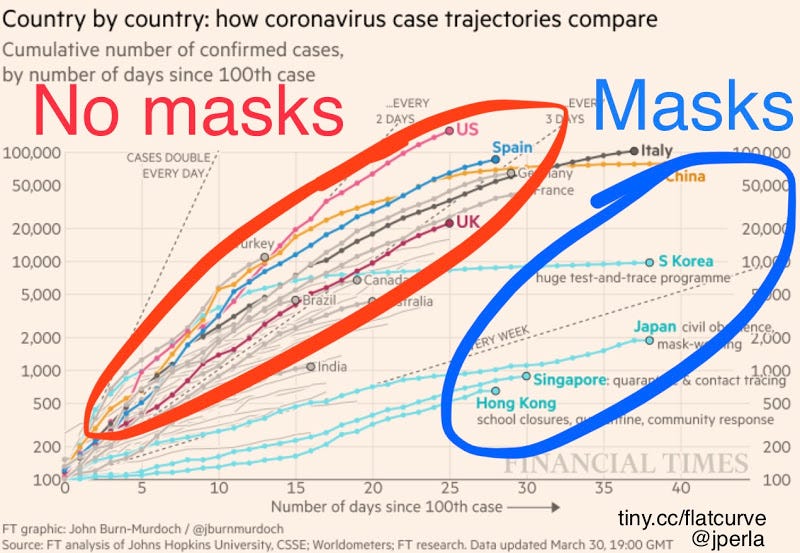The Dual Protective Role of Masks: Protecting Both You and Others
Written on
Understanding the Protective Benefits of Masks
For a long time, the message has been clear: wear masks to safeguard others. If someone is unknowingly infected, a mask can significantly limit the spread of viral particles into the environment. However, it's essential to recognize that masks also serve to protect the wearer by reducing the inhalation of excessive virus particles.
The Impact of Masks on Viral Load
A perspective paper published on July 31 in the Journal of General Internal Medicine by Monica Gandhi, a medicine professor at the University of California, and her colleagues, highlights this crucial aspect. Titled “Masks Do More Than Protect Others During COVID-19: Reducing the Inoculum of SARS-CoV-2 to Protect the Wearer,” the paper delves into the relationship between masks and viral inoculum.
The authors assert that while the main focus has often been on preventing virus transmission from asymptomatic carriers, it is equally important to understand that a reduced viral load can lead to milder disease outcomes. According to their findings, a lower viral load is more manageable for the immune system. Therefore, even though wearing a mask might not entirely eliminate the chances of testing positive for Covid-19, it significantly decreases the likelihood of experiencing severe symptoms.
“The first theory — to prevent the spread of viral particles from asymptomatic individuals to others — has received a great deal of attention,” they explain. “However, the second theory — that reducing the inoculum of the virus to which a mask-wearer is exposed will result in milder disease — has received less attention…”

Direct Evidence from Animal Research
Numerous studies have established a direct correlation between viral load and disease severity across various respiratory infections, including SARS-CoV-2 and others. For instance, a study involving hamsters published in May revealed that when cages were separated by surgical masks, the transmission of Covid-19 dropped dramatically. The hamsters that did become infected under these conditions exhibited less severe symptoms compared to those in unprotected environments.

Indirect Evidence from Human Studies
The research by Professor Gandhi and her team also pointed out that prior to widespread mask use, asymptomatic infection rates were around 15%. This figure surged to approximately 40-45% in more recent evaluations. They noted significant insights from outbreaks in confined spaces, such as cruise ships, where mask-wearing drastically reduced symptomatic cases.
In the Diamond Princess cruise ship incident, without masks, 82% of infected individuals exhibited symptoms. Conversely, in another outbreak where masks were utilized, only 19% of cases were symptomatic, highlighting a substantial decrease in severe illness.

The Case for Silent Spread and Community Immunity
While the rise in asymptomatic infections raises concerns about unnoticed spread, it can also foster greater community-level immunity. The professors argue that increased exposure to the virus, accompanied by lower viral loads due to mask usage, could mitigate the severity of illness within the population.

Short Summary
Masks are not solely for protecting others; they also help individuals by reducing the amount of virus they inhale, leading to milder infections. A lower viral load enhances the body's ability to combat the virus, supported by various studies. While there are concerns about asymptomatic spread, the overall impact of mask-wearing tends to lower the risk of severe Covid-19 outcomes and may contribute positively to herd immunity.

Video Insights on Mask Efficacy
Learn more about the science behind mask usage and its protective benefits in the following videos:
The first video discusses the mechanisms by which face masks protect individuals and others during the pandemic.
The second video presents findings from the Mayo Clinic on how masks can effectively prevent the spread of Covid-19.
Author’s Note
For further compelling insights on this topic, refer to Walter Adamson's work from early April, which emphasized that masks also protect the wearer.